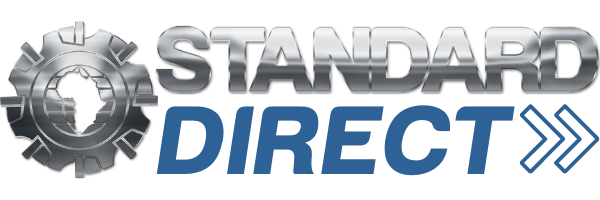Miraco 3d Scanner now under $2000...
Miraco 3d Scanner now under $2000...
*Excludes Local Taxes*
Products are built on order, general delivery is 8~16weeks and includes sea freight to most seaports.
Introducing the STANDARD H4M-200 4-post Hydraulic Minting Press
The H4M-200-Ton Minting Press represents the pinnacle of precision and durability in the field of coin and medal production. Engineered for efficiency and unparalleled accuracy, this heavy-duty press is designed to meet the rigorous demands of high-volume minting operations.
Key Features:
Delivery is 10-14 Weeks from Deposit
How to Use a Minting Press
Step 1: Preparation
Step 2: Setting Up the Press
Step 3: Programming the Press
Step 4: Minting Operation
Step 5: Quality Control
Step 6: Post-Operation Procedures
Step 7: Record Keeping
Safety Note: Always follow the manufacturer's safety guidelines and wear appropriate personal protective equipment (PPE) when operating the press.
Maintenance Tip: Regular maintenance is crucial for the longevity and optimal performance of the minting press. Follow the manufacturer's guidelines for scheduled maintenance and inspections.
Remember, specific models of minting presses may have additional or different steps based on their unique features and capabilities. Always refer to the user manual specific to your model for the most accurate guidance.
Introducing the STANDARD H4M-200 4-post Hydraulic Minting Press
The H4M-200-Ton Minting Press represents the pinnacle of precision and durability in the field of coin and medal production. Engineered for efficiency and unparalleled accuracy, this heavy-duty press is designed to meet the rigorous demands of high-volume minting operations.
Key Features:
Delivery is 10-14 Weeks from Deposit
How to Use a Minting Press
Step 1: Preparation
Step 2: Setting Up the Press
Step 3: Programming the Press
Step 4: Minting Operation
Step 5: Quality Control
Step 6: Post-Operation Procedures
Step 7: Record Keeping
Safety Note: Always follow the manufacturer's safety guidelines and wear appropriate personal protective equipment (PPE) when operating the press.
Maintenance Tip: Regular maintenance is crucial for the longevity and optimal performance of the minting press. Follow the manufacturer's guidelines for scheduled maintenance and inspections.
Remember, specific models of minting presses may have additional or different steps based on their unique features and capabilities. Always refer to the user manual specific to your model for the most accurate guidance.
*Information shown may differ or change without warning*
Machine Specialists
International Sales
Online Support
Superiors Quality Products
Introducing the STANDARD H4M-200 4-post Hydraulic Minting Press
The H4M-200-Ton Minting Press represents the pinnacle of precision and durability in the field of coin and medal production. Engineered for efficiency and unparalleled accuracy, this heavy-duty press is designed to meet the rigorous demands of high-volume minting operations.
Key Features:
Delivery is 10-14 Weeks from Deposit
How to Use a Minting Press
Step 1: Preparation
Step 2: Setting Up the Press
Step 3: Programming the Press
Step 4: Minting Operation
Step 5: Quality Control
Step 6: Post-Operation Procedures
Step 7: Record Keeping
Safety Note: Always follow the manufacturer's safety guidelines and wear appropriate personal protective equipment (PPE) when operating the press.
Maintenance Tip: Regular maintenance is crucial for the longevity and optimal performance of the minting press. Follow the manufacturer's guidelines for scheduled maintenance and inspections.
Remember, specific models of minting presses may have additional or different steps based on their unique features and capabilities. Always refer to the user manual specific to your model for the most accurate guidance.
*Information shown may differ or change without warning*
